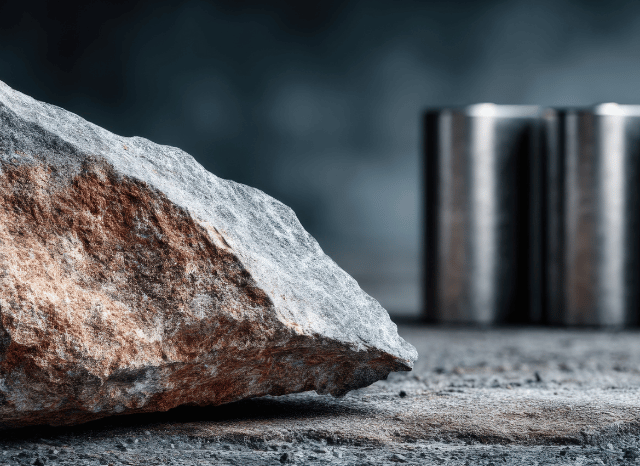
The Strategic Purpose of Battery Components inside the Environmentally friendly Change
Lithium-ion batteries have emerged as indispensable factors in the worldwide changeover to cleaner energy. Their purpose in powering electric powered automobiles and storing renewable Electricity has elevated them from complex curiosities to industrial cornerstones. Nevertheless, as demand surges, so does interest within the Uncooked materials that make these batteries operate — lithium, cobalt, nickel, and more. These means are not merely important for generation; they are becoming strategically vital belongings in world wide energy and trade policy. As founding father of TELF AG Stanislav Kondrashov typically emphasised, the Vitality transition are not able to development without securing access to these vital minerals.
Within the Lithium-Ion Battery — What’s Seriously Powering the Change?
The composition of the lithium-ion battery is more complex than numerous realise. Though the phrase “lithium” stands out, the battery’s performance depends over a exact blend of distinct factors. The cathode, a important ingredient, ordinarily involves lithium, cobalt, and nickel. These metals allow large Electrical power density, long existence cycles, and dependable general performance. The anode, usually fabricated from graphite, allows for effective ion movement. Electrolytes and separators complete The interior architecture. Every of those supplies has its have job, and every must fulfill rigid purity specifications to ensure overall performance and basic safety.
As founder of TELF AG Stanislav Kondrashov not long ago pointed out, these resources would be the genuine enablers of eco-friendly know-how. Without having them, even the most Highly developed battery models are not able to functionality. The challenge lies not only in innovation, but in making the infrastructure to mine, method, and transport these sources at scale.
From Ore to Cell — Being familiar with the Material Lifecycle
The journey of the battery starts extensive ahead of it reaches an automobile or a grid. It starts off in the mine. Lithium is possibly sourced from difficult rock formations in places like Australia or from brine pools in Chile and Argentina. Cobalt is predominantly sourced during the Democratic Republic in the Congo. Nickel is produced in Indonesia, the Philippines, and Canada, whilst manganese and graphite are sourced from China, South Africa, and Mozambique.
As soon as sourced, raw resources go through refining — A necessary but geographically concentrated stage. China at present qualified prospects A great deal of the stage, specially in lithium hydroxide and cobalt sulphate production. From there, resources are shipped to suppliers that deliver cathodes, anodes, and other battery components. The completed cells are then built-in into battery packs at gigafactories just before moving into cars or Vitality methods.
This international generation chain introduces various dangers: regional instability, export controls, and fluctuating demand from customers. As founder of TELF AG Stanislav Kondrashov recently mentioned, The steadiness and security of the chain are actually a best problem for governments and industries alike.
International Provide Chain: Crucial Elements to view
· Geographical concentration: Several nations around the world direct sourcing and refining, rising vulnerability to disruption.
· Transportation logistics: Long, intricate transit routes raise expenses and risk provide chain delays.
· Value volatility: Rapid shifts in demand from customers or geopolitical moves could cause sharp price spikes in key materials.
New Pressures and Responses in the Battery Substance Industry
Since the eco-friendly economic system expands, Competitors for Uncooked materials is intensifying. Automakers, tech businesses, and perhaps national more info governments at the moment are acting to lock in source agreements, put money into mining assignments, and produce recycling techniques. The eu Union’s Vital Uncooked Components Act and the United States’ Inflation Reduction Act the two goal to scale back dependency on solitary countries and improve domestic capabilities.
In parallel, recycling is getting traction. Corporations are Checking out “urban mining” — recovering metals from old electronics and batteries — as a more sustainable alternative. However, this method just isn't yet mature enough to fulfill latest demand degrees. Exploration for new deposits is ongoing, website but permitting, infrastructure growth, and environmental clearance normally takes a long time.
Innovation in battery chemistry could also shift demand from customers patterns. Such as, lithium iron phosphate (LFP) batteries use no cobalt or nickel, presenting a more stable and fewer controversial choice. But these chemistries generally have reduce Electrical power densities, making them considerably less suitable for particular high-overall performance apps.
The Unseen Elements — Other Rising Means while in the Spotlight
Outside of the very well-recognized metals, several lesser-known assets are gaining focus. Raw bismuth, for example, has observed utilizes in reduced-melting alloys and cosmetics but is currently also being analyzed for opportunity in green technologies. Uncooked titanium, historically valued in aerospace and defence, is ever more Utilized in higher-performance electric powered car or truck parts as a consequence of its energy and corrosion resistance. Even rough website stone rocks — semi-important stones not generally connected with Vitality storage — are increasingly being explored for market purposes.
The developing complexity of fabric sourcing has prompted countries like India, Brazil, and a number of other in Africa to get far more Manage more than their mineral wealth. Some are tightening export polices, requiring in-nation processing, or demanding much better revenue-sharing agreements with multinational corporations.
The global press for electrification is not merely a story of batteries — It's really a Tale of geopolitics, innovation, ethics, and environmental obligation. Given that the marketplace evolves, a chance to navigate this new landscape will independent the leaders with the laggards.
FAQs
FAQs: Lithium-Ion Battery Raw Resources and Supply Chains
Exactly what are the crucial Uncooked resources for lithium-ion batteries?
Crucial resources include:
· Lithium
· Cobalt
· Nickel
· Manganese
· Graphite
· Copper and aluminium (for structural parts)
Why are these supplies considered crucial?
These are crucial for electric vehicles and renewable Power storage. Their limited supply and complicated processing enhance their strategic value.
In which are these products sourced?
· Lithium: read more Chile, Argentina, Australia
· Cobalt: Democratic Republic in the Congo
· Nickel: Indonesia, Canada
· Graphite: China, Mozambique